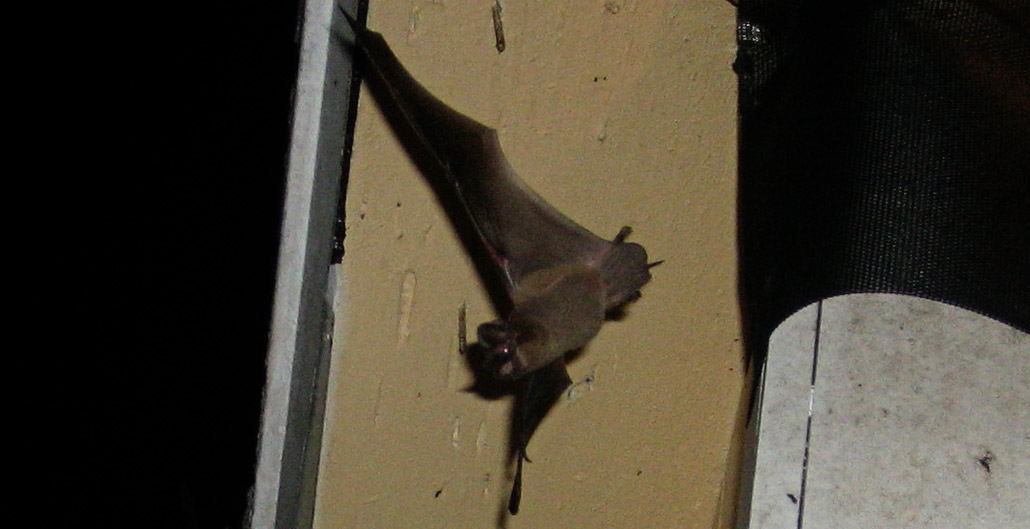- USA Wildlife Removal Education Guide - Bat Mating Habits
Bat Mating Habits

This occurs most often at night, when the male awakening the female by biting her on the neck and then proceeding with copulation. During the day, the male usually starts the process by rubbing his head against the female.
Despite the often enormous size of their colonies, bats are actually one of the slowest reproducing animals there are. They usually begin mating at about 14 months of age and once a female is impregnated, she usually joins other pregnant females in a maternity colony for security and warmth.
Colonies can be quite large, with one in an Arizona cave holding an estimated 20 million pregnant bats.
Female bats are able to manipulate the time of their pregnancy and the birth of their young. Breeding season normally is in the spring of the year and the gestation period can vary in length from 40 days to as long as six months, with the female bats table to delay implantation of the egg by storing the sperm in a reproductive tract if there is a shortage of nutrition. In this manner, female bats can birth up to three healthy litters, one baby at a time, in a single breeding season.
Baby bats are born large, one-fifth to one-third the size of the mother, so food supply during gestation is a significant factor. Born blind and hairless, the pups cling to the mother’s furry underbelly to eat and sleep, and even when she is hunting.
The babies are also born without fully developed wings but by about two months of age they are ready to fly and begin looking for their own food. The mothers may continue to spend time with their young until they are up to four months of age, depending on the species of bat. The pups’ wings develop very quickly and once they do, they are ready to hunt on their own and the mother is ready for her next pregnancy cycle.
Meanwhile, what of the male bats? Once the mating is done, they mainly go on their own solitary way, hanging out upside down in a tree or in a building, until it’s time to perform their reproductive duty once again.
If you need help, we service the entire USA! Click here for a wildlife removal specialist in your town!
Go back to the main How To Get Rid of Bats page for more information about Bat Mating Habits.
Read more about bat control in my educational articles. Find out if a bat house will prevent bats from entering your home, and whether or not the city or county animal services will help with a bat issue. Learn if a bright light or high pitch sound deterrent machine will work on bats, and if a bat in your attic will have a nest of babies. Find out if a pest control company will remove a bat, and whether it is Legal to trap bats.
I can teach you how to Locate and Remove a Dead Bat and tell you everything you need to know about Bat Exclusion Material. Learn more about Bat Mating Habits and the summer maternity season. Learn how to get bats out of your attic and the different property modifications you can do to keep bat populations down.
Find out if mothballs or ammonia really help repel bats and even if bats make Good Pets. Read my thoughts on if you should ever Poison a Bat, and my best advice on how to clean Bat Feces out of your Attic.

